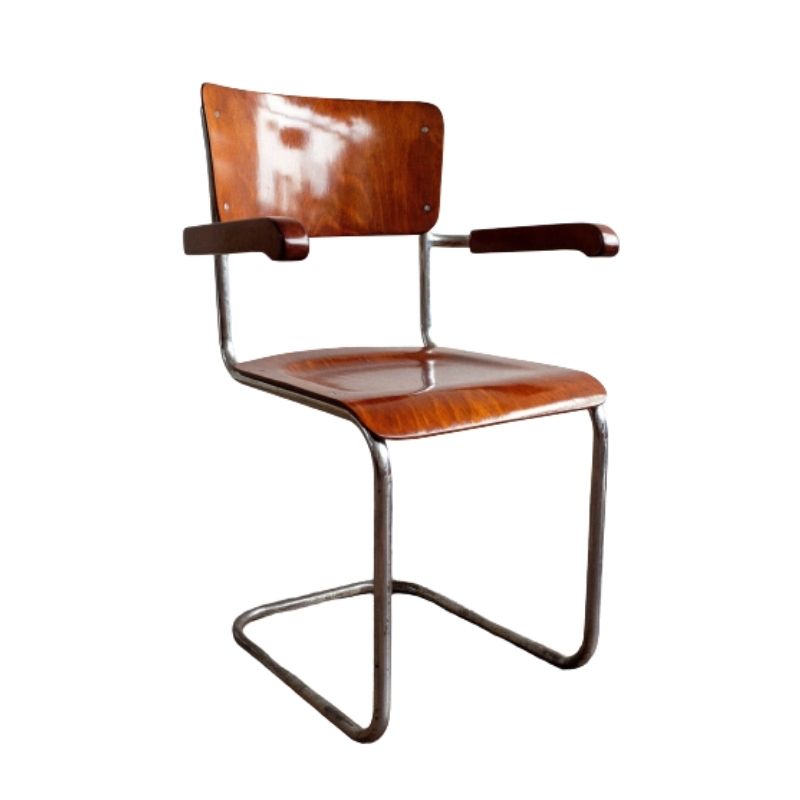continued
Teachers are crucially important authority figures, most students look up to them and respect their authority. Teachers also spend a great deal of time engaging students during a typical school day, often, more than parents associate with those same children in an entire week. Sadly, many times the teacher may be the only authority figure a child has to learn proper morals and values from due to instability or ignorance at home.
Ideally, parents and teachers work together to develop a well balanced child who can eventually enter society create a fruitful life for themselves as they see fit. However, if the parent cannot fulfill the obligation of instilling moral values in their child, it is the duty of the teacher to attempt to guide that child toward an accepted standard of morals and values.
- - - - - - - - - - -
Works Cited
Pastan, Linda. ?Ethics.?
James, Missy, and Alan P. Merickel. Reading Literature & Writing Argument. 3rd ed.
Upper Saddle River: Prentice Hall, 2008.
I'm one of
those who think we have plenty of people, and not enough art -- and I have never bought into the idea that (human) life is somehow "sacred". . .so my answer would be self-evident.
Given that, the idea that the woman should be given the choice, is the happy answer that unites yin and yang. . .or something ?
Stephen...
The concrete, the basic, the fundamental, these are always the richest mine for thoughtful discourse in discourse. Why? Because each thing designed in civilization of a very basic nature--a faucet handle, a toilet, a knife, a cup, a hearth, a chair, a window--each of these items is an epic similie of a human tool evolved over centuries, or even thousands of years.
Why do you think anthropologists and archeologists spend so much time on the artifacts of civilizations? It is not because they love the artifacts. It is rather, because the artifact, if rationally unpacked and understood, bears within it the sum total of human evolution up to the point of its creation, as well as the tastes and preferences of the people of that moment reconciled by a maker of things.
Really and truly, an iPod is a pitifully young and insignificant artifact in comparison to a table knife in terms of the knowledge that in holds within itself about humanity.
Your mention of a toaster is vastly younger than a knife, also, but it is in such universal use for three quarters of a century now that it has much to tell already.
Look at a single, drop forged crescent wrench. It is an awesome device unsurpassed in its elegance of function and form.
We are dreamers and tool makers with opposed thumbs, vocal chords, and a capacity to assign sounds to objects and processes. Outside of these traits almost all animals and plants are superior.
What we do is make things and wish we could make things we don't yet know how to make. We make relationships. We make gods. We make leaders and followers. We make friends and we make enemies. We make wars. We make chairs and toasters and Guernicas.
Nothing that we make cannot be unpacked to learn enormous amounts about ourselves.
Thank you for your initial post.
SCS...
Anything goes that does not hurt oneself, or someone else.
If even designers self-censor their expressions of their constructive thinking by worrying about how long or short a post ought to be, then the civilization is in a world of hurt that is apt not to go away...until designers regain their comfort level with thinking out loud about whatever design, about whatever aspect of design, about whatever aspect of context that design must occur within. Designers and architects and land planners and structural engineers and developers and producers and equity investors and lenders are space shapers. They shape the spaces in which we live. If anything doesn't go with their thinking and discourse, then what good is discourse at all?
Good for you for touching your keys as you did.
SCS...
Institutionalized education is a recognition of the importance of teachers by parents and the state.
Parents realize that teachers can get a child to open up to and learn certain things that a parent, even one sufficient educated to communicate the message simply cannot.
The state realizes that the parent is an economic player capable of working more, and generating more wealth for the state, if the parent does not have to split time between teaching and working.
Parents and state combine forces and institute state education to achieve these parallel interests.
Once instituted, parents do everything they can to get their child the teachers by living in the best neighborhoods to give their children the biggest edge in the competition to claim societies benefits.
At the same time, the state seeks to limit and channel education in ways to produce the kind of educated persons that will do the kinds of work that produces the amounts of wealthy and force and power that the state seeks. The state seeks to use teachers to brainwash children into patriotism and blind loyalty to the state, so that the children will, when push comes to shove, fight and die to perpetuate the state and advance its agenda in wealth and power acquisition.
Teachers are fantastically...
Teachers are fantastically important.
Teachers are the interface between students and knowledge the parents want learned and the propaganda the state wants children indoctrinated in.
Any state that has decided to increase sharply the emphasis on propaganda in general curriculum and also decided to focus the best teachers and most advanced teaching resources at an accelerated learner minority, at the sacrifice of knowledge for a slower learning majority, has made an implicit statement of state strategy. The state has indicated that it thinks it can get enough knowledge work done by training a highly intelligent and highly educated minority (the right tail of intelligence testing) for knowledge work and that it views the rest of its children as persons not truly worth teaching in the conventional meaning of the work teach; i.e., conveying all the knowledge that a person is capable of learning and that empowers that person to be the best the he/she can be. Instead, the state has chosen to use those to the left of the right tail for wage slaves and canon fodder.
Designers need to understand particular aspect of teaching and the institutional forces shaping education of students for at least two reasons. First, in an ethical sense, do designers wish to act as enablers of a state that makes choices like this and so serve as not only as one of its designers, but also as one of its obedient supplicants and collaborators in this sort of educational system, or do they wish to work to change this rather cruel asymmetry in distributing educational services? I am not taking a side here, though I have my own strong opinions, rather I am just pointing it out for the sake of this discourse.
continued
Second, designers have to understand the above, because doing so greatly helps a designer understand the kind of persons his product, if marketed to the majority of persons, is going to be used by and have to satisfy.
Designers and others like myself, who complain about the poor quality and design of products have no choice but to try to change the educational system (the trade offs between knowledge and propaganda, as well as the hugely asymmetric distribution of educational resources between right tail intelligence and the rest), so that instituted education produces a majority with effective, well-developed minds capable of and predisposed to making rational decisions about product function, aesthetics, and quality, rather than persons educated precisely to be docile, suggestion-receptive impulse buyers.
continued
Getting good teachers is only half the battle. We have to have institutional rules determining education that enable good teachers to teach everyone state of the art knowledge. We need to stop with the aristocratic/fascist notion that only the right tail intelligence folks can learn fast, so they are the only ones that deserve the bulk of the high quality instruction. We need to start wising up, so to speak. We need to start saying that the more persons we have that are well educated the better, and that we ought not only devote a lot of resources to teaching the right tailers, we need to devote even more resources to all those left of the right tail capable of learning, but at a slower rate. In short, what kind of dumb-assed nonsense is it to waste a brain that can think the same things, but only at a slower rate? Put another way, who cares how fast a persons learns, if once they have learned it they can perform the task as effectively as someone who learned it faster. Rate of learning is almost irrelevant in many high level tasks. Accuracy and precision and logic and dexterity of thought are vastly more important than speed of learning in so much work.
Sorry I had to be so brief here, but time is of the essense. This subject you have raised easily merits twice the length I have devoted to it here.
This thread is so complicated
I have not gotten involved because alot of the people posting here are of the long winded variety!
Designs that don't work?
Bang & Olfsen - well designed but often underpowered
Popular American SUV's - it's a large van or wagon on a truck...why would anyone want to drive a truck as an everyday vehicle?
I like a lot of the smaller cars, but if you got into an accident in your Mini Cooper or Smart Car, you probably wouldn't survive.
Another bad design; any hand-held device that the buttons are smaller than your fingers.
most chairs with angled-out, or "splayed' legs; looks like they're going to break.
All of the cordless phones you can buy for your home. Vtech, Panasonic, etc....all crappy made. (Wish AT&T would bring back the quality of the old Western Electric rented phones...now THEY were made to last!)
HD LCS TV's not made to last; TV's like Philips, and the nice looking but cheaper TVs that cannnot be repaired. Keep to Panasonic, Sony or LG only.
Barry - nice post but please ...
Barry - nice post but please could you rewrite it in not less than 1500 words, keeping to the formula that if you can make your point in 10 words make sure you use 100. Don't forget along the way to add in some homespun cereal packet philosophy and for God's sake make sure you don't refer in any direct way to the subject of the thread. This way you will effectively hijack the thread making it inaccesable to anyone disinclined to read the whole of your text. It will become your own. Remember that only by making a contribution in at least three sections, each with 'contd' at the top, can you be sure to have ripped the guts and love out of each discussion.
Another good example
of design that doesn't work is chairs and sofas that are very fragile...i.e. the Harp Chair, the long, narrow, skinny-backed Arts and Crafts chairs made by Roycroft, and, of course, those hideous cardboard chairs made by Frank Gehry. yeech.
Oh, and how about the "Dotsamia" paper dresses of the swingin' 1960's?
If you need any help, please contact us at – info@designaddict.com









